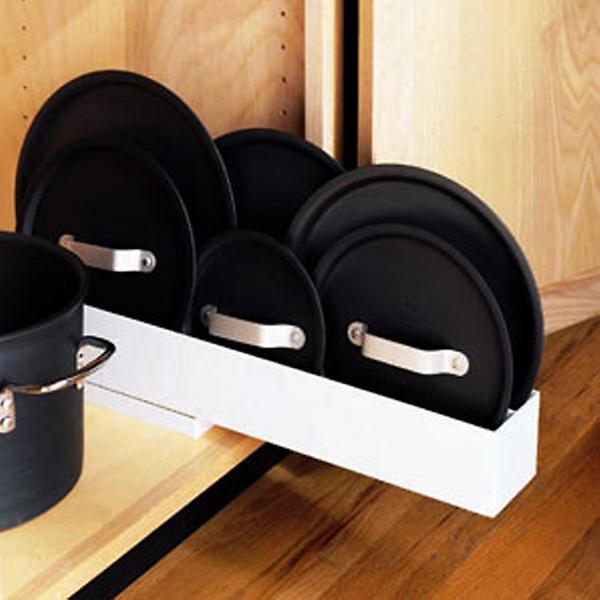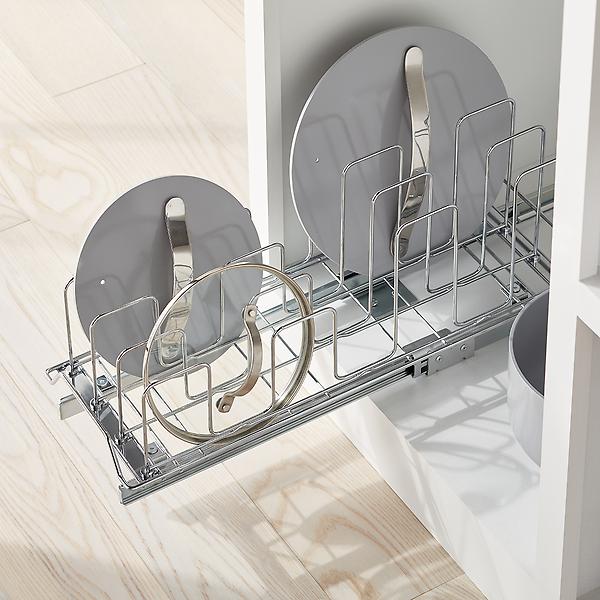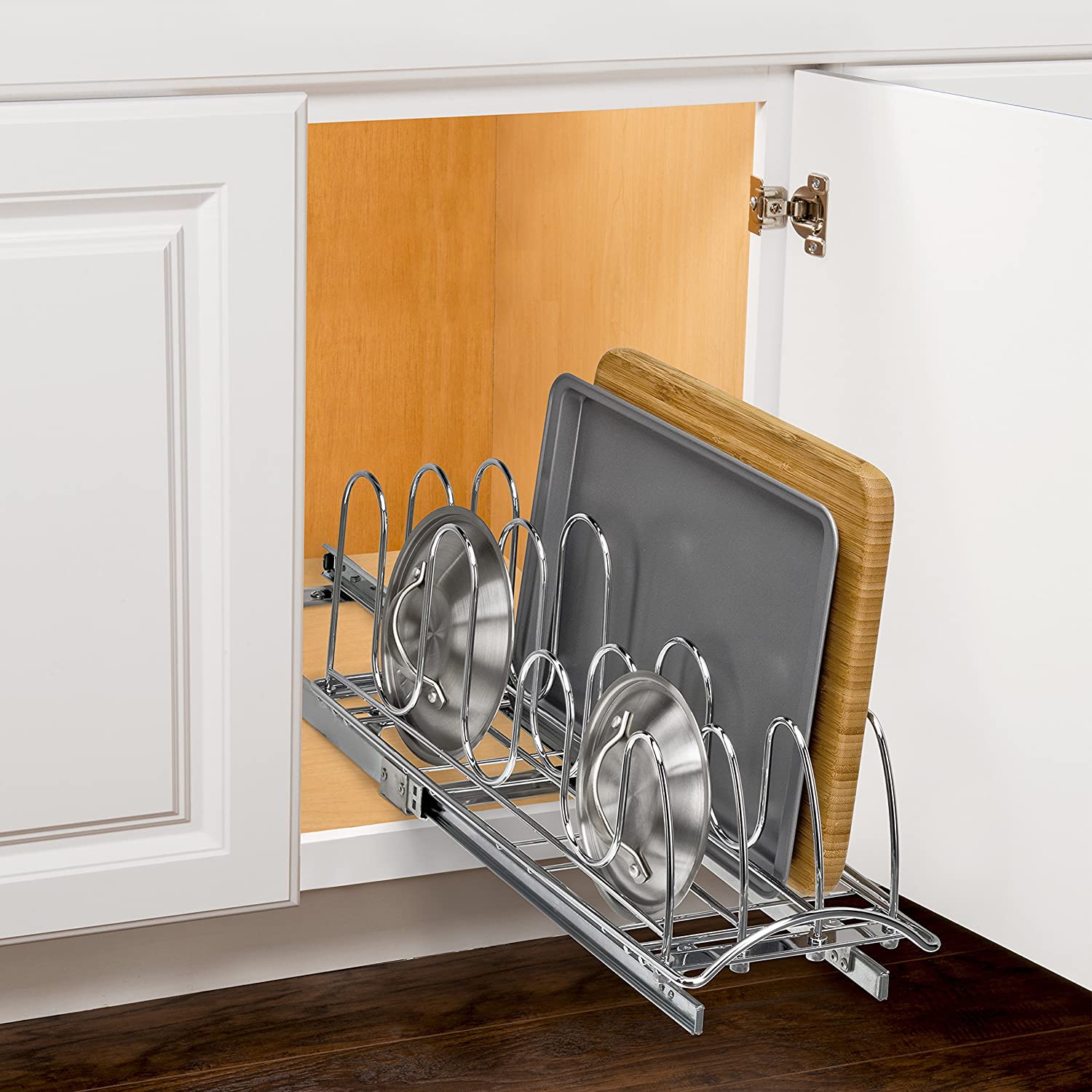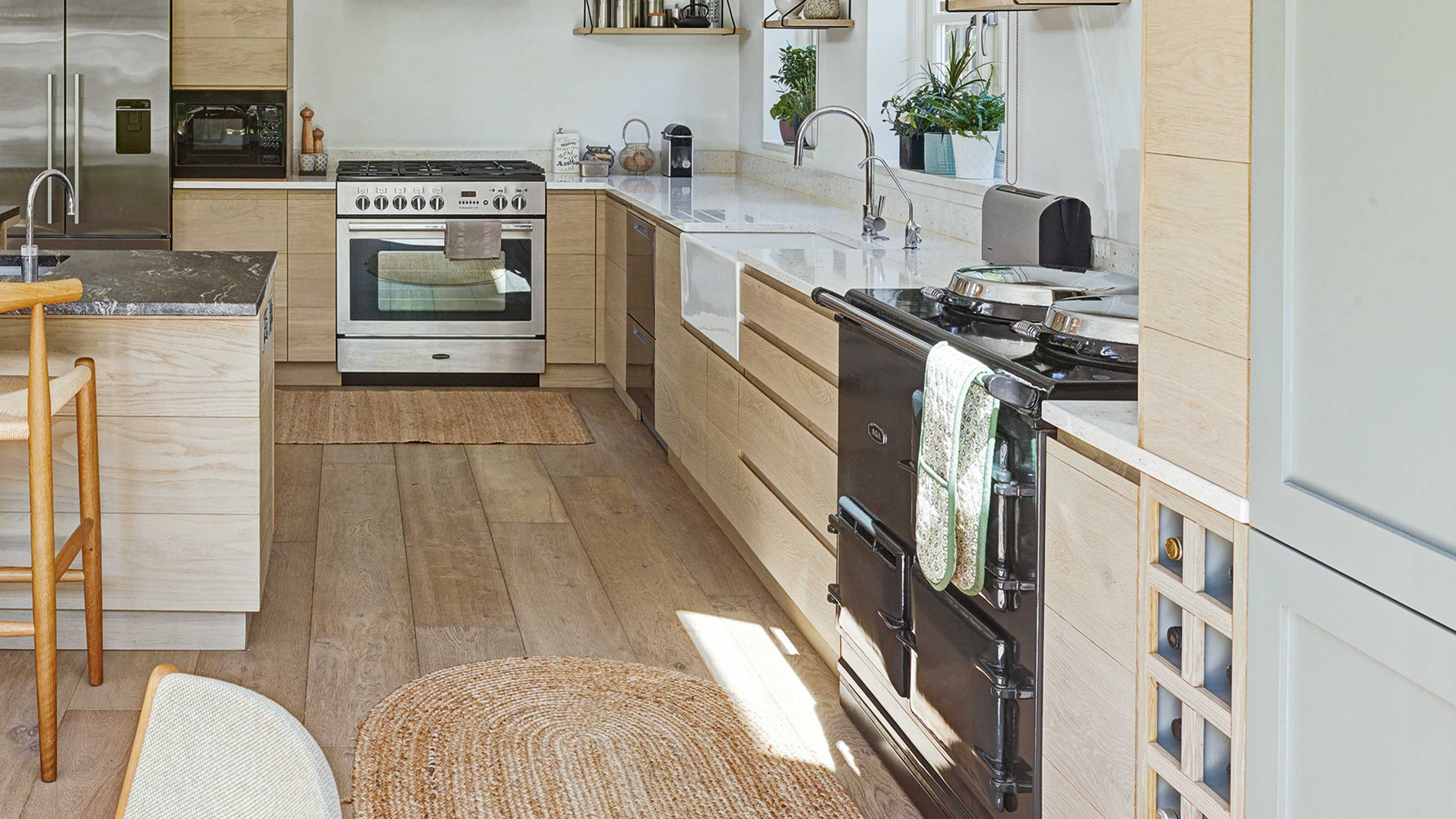
Of all the items in your kitchen, baking dishes are arguably one of the trickier things to store. Unless you have a matching set (which most of us don’t, let’s face it) they’re unlikely to nest perfectly, and even if they do, you inevitably need the one right at the bottom come dinner time.
The first step towards organizing a kitchen properly is ensuring every item has a designated home. Whether you store them in drawers or cabinets, baking dishes should live in the ‘cooking’ zone – or the ones you use most often should at least, anyway.
Once you know where you’re storing them, you can then start thinking about how to store them.
How to store baking dishes
We’ve compiled a step-by-step guide, including top tips from experts on the best kitchen storage ideas, to ensure your baking dishes remain neat, tidy, and easily accessible at all times, and quick to put away, too – the less time spent clearing up, the better.
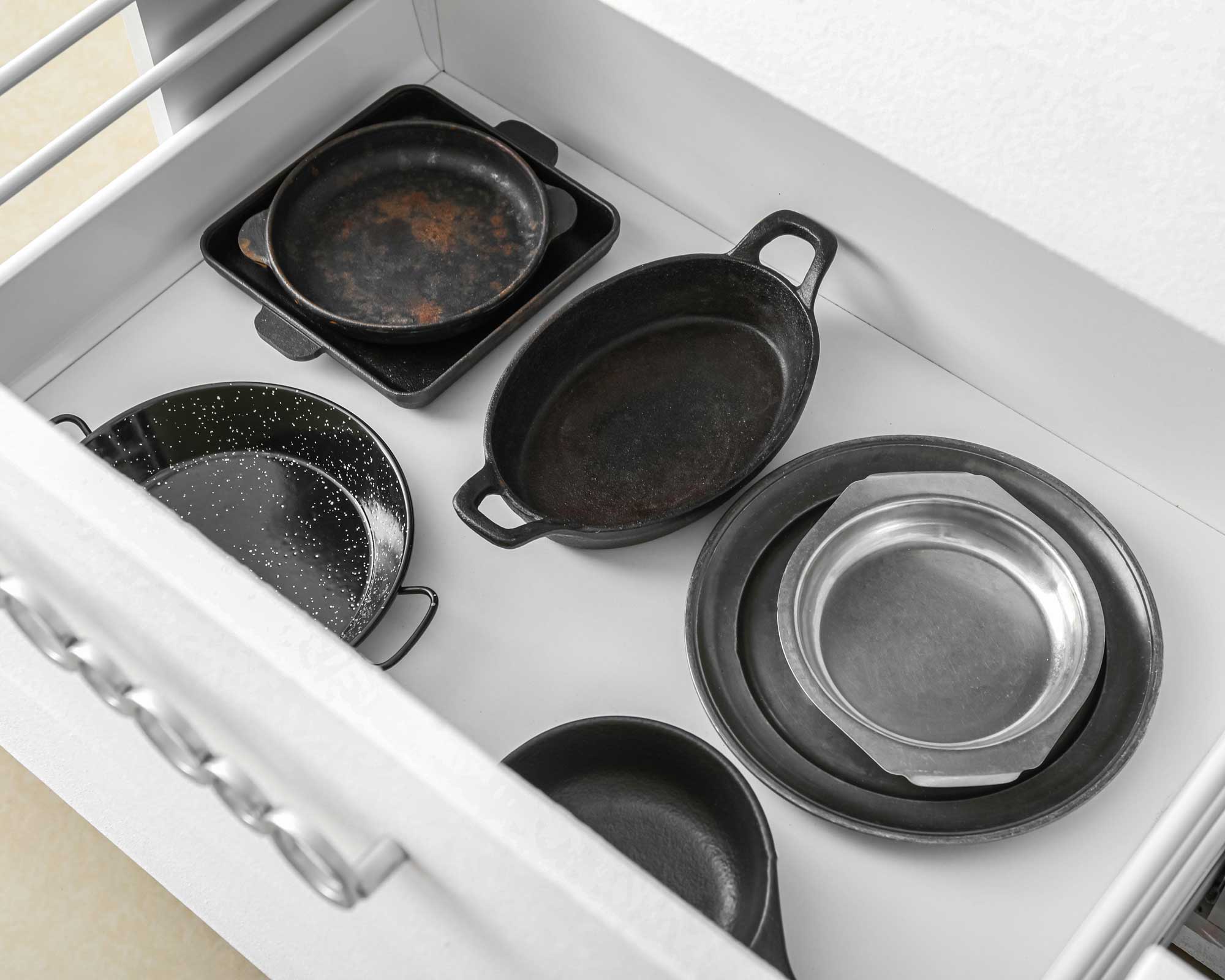
1. Declutter your dish collection
You’ve likely accumulated multiple baking dishes over the years, some you might no longer want or need. Now’s the time to streamline your collection. Start by getting rid of anything that’s dirty or damaged, then set aside duplicates or dishes you no longer use for donation.
Categorizing as you go will save you time further down the line, and is easier to do at this stage. Think about how often you use certain dishes. Some you might only use during the holiday season, or when hosting dinner parties. Consider storing these outside of the kitchen altogether to free up a bit of space for more essential cooking items.
2. Give frequently-used baking dishes prime position
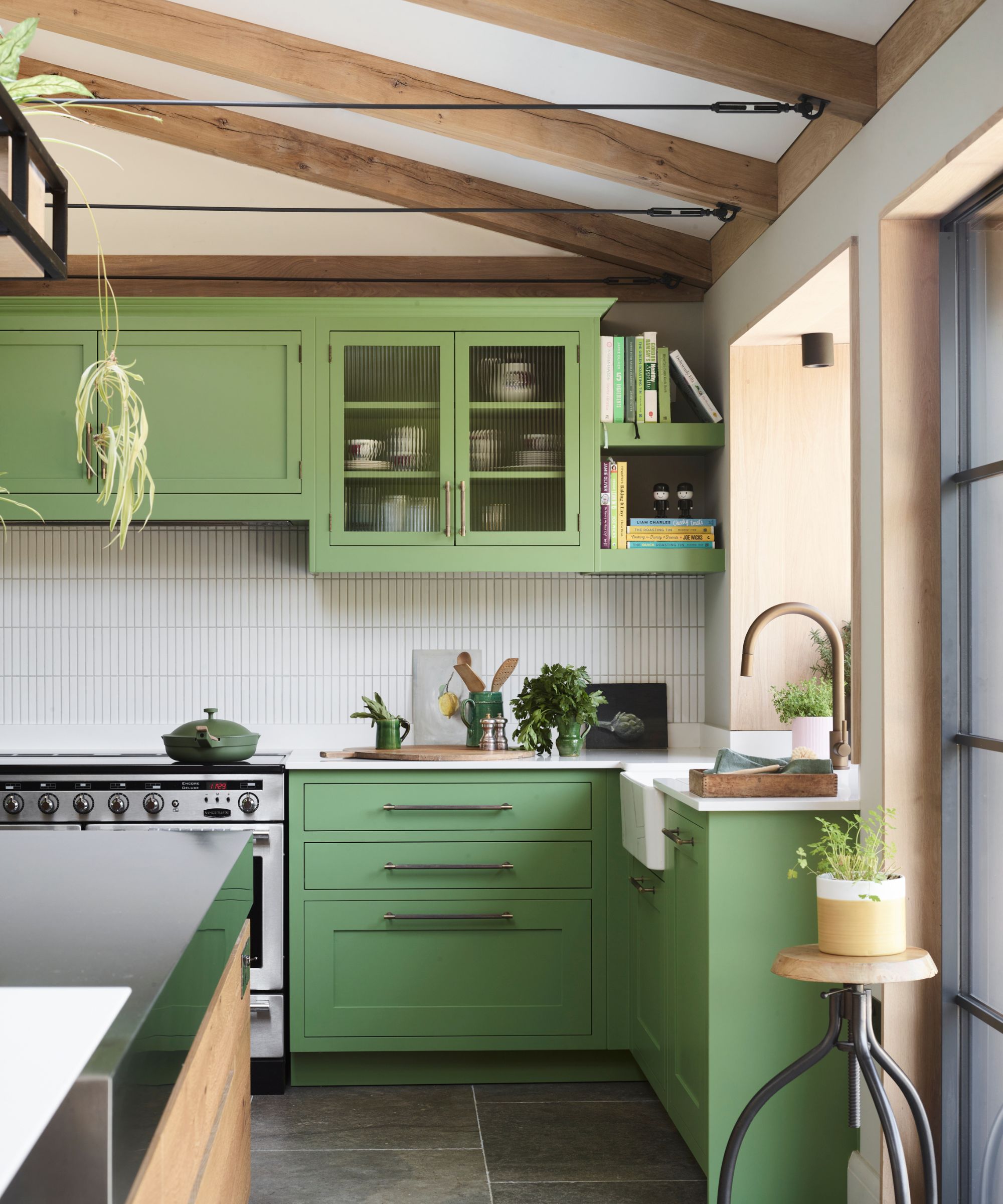
Once you’ve decluttered, you should be left with a core collection of baking dishes. If it’s still on the large side, consider separating the dishes you use most regularly from the rest of your collection and give them prime position within your kitchen; drawer or kitchen cabinet storage ideas within the cooking or prep zone, as near to the stove as possible.
Design expertise in your inbox – from inspiring decorating ideas and beautiful celebrity homes to practical gardening advice and shopping round-ups.
If you’re unsure about which area of the kitchen your baking dishes should reside in, check out our guide to the six key zones of kitchen organizing.
3. Bear weight in mind
Easy access for most people usually means positioning items at waist height – the lower shelves in upper cabinets, or the top drawers in base cabinets. That’s fine for lighter dishes, but if you’re dealing with heavier ones (or you’ve stacked several inside each other), you’ll need to position them lower down to avoid any breakages or accidents.
4. Customize a cabinet
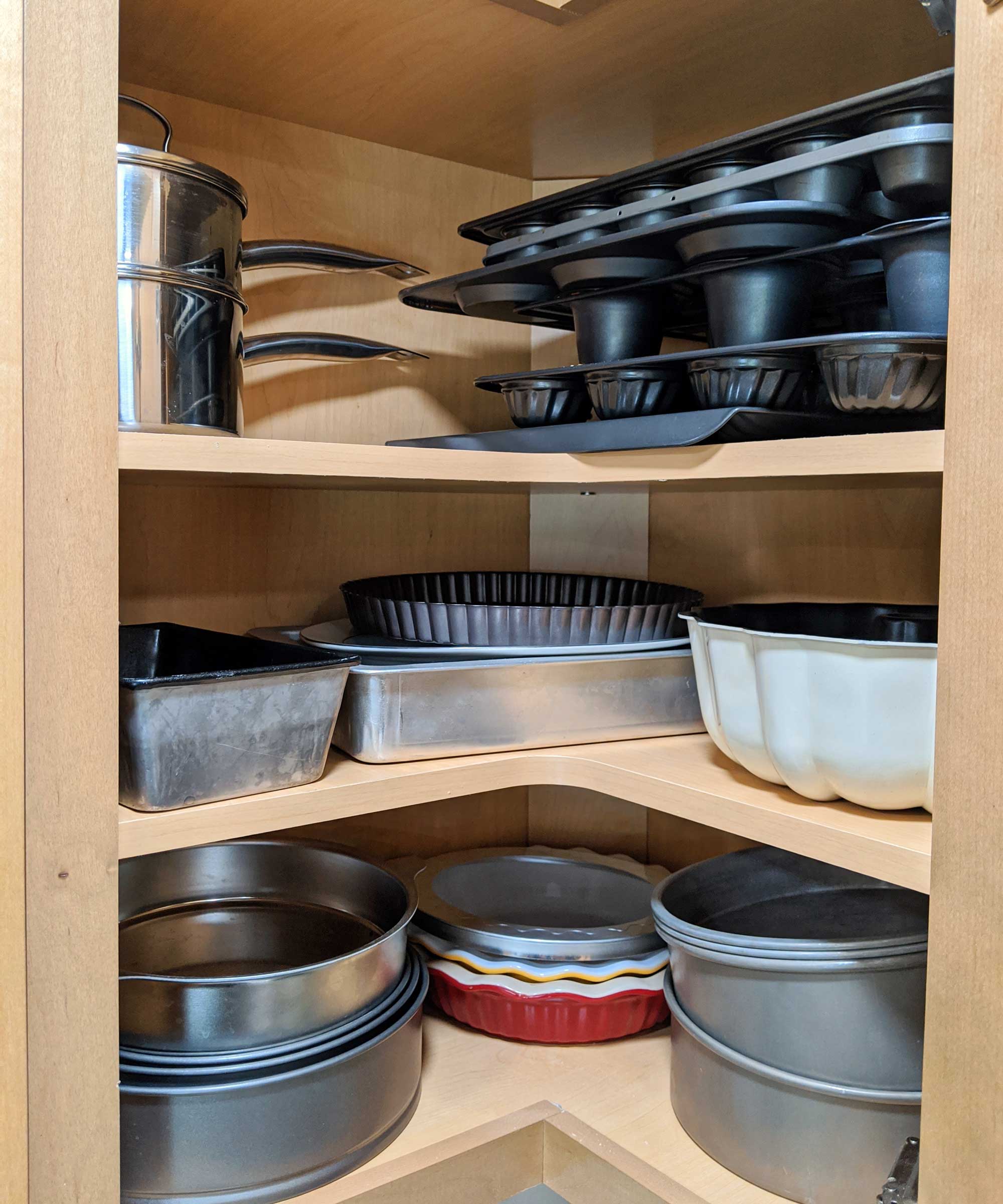
Nowadays, there are all manner of kitchen organizers you can employ to make your cabinets work that little bit harder. One of the first things you should do when organizing cabinets is to adjust the shelves to fit what you’re storing, so start by working out the height of your dishes, being sure to take stacking into account.
'I like to separate stacks of nested baking dishes, one on top of a cabinet riser and another one below, so they don’t end up being too heavy. There are also fewer dishes to pull out to get to the one you need, says professional organizer Amanda Weiss, founder of Urban Clarity. '
If you’d rather not reach into cabinets every time, try these RoomTec pull out cabinet organizers, also from Amazon.
5. Dedicate space in a deep drawer
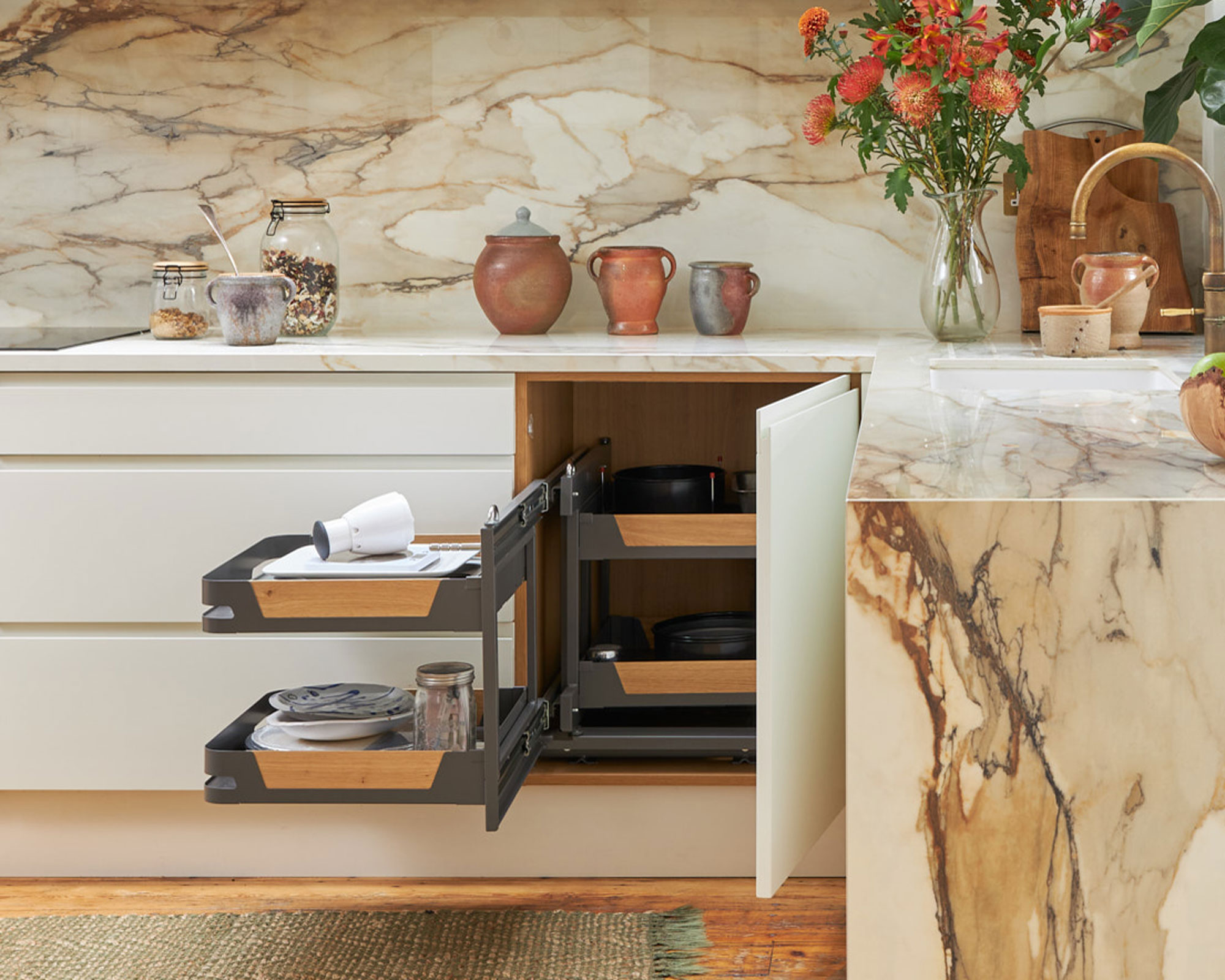
Cabinets may be your go-to option, but a deep drawer is usually a far more accessible way of storing baking dishes; pull-out storage means less rummaging around to find what you need. Lining the drawer with a pegboard is a clever hack – you can simply adjust the dowels according to the size of dishes you’re storing, so they won’t rattle around when you open and close it. Using this Gorilla Grip anti-slip shelf and cabinet liner at Amazon can make a difference, too.
6. Store vertically in a rack
Storing baking dishes upright can be a practical and space-savvy solution, particularly if you’re organizing long and narrow kitchen cabinets.
‘More durable dishes can be stacked on their sides like files without the risk of breakages’, says Laura McHolm, founder of North Star Moving Company. ‘This simple step not only creates more room but allows you to see exactly what you have, as opposed to when they’re stacked one on top of the other. You can pull them out more easily, too.
Heavy-duty racks are great for keeping them in place if they’re in a drawer or on a pull-out mechanism of some kind. ‘Make sure that the dividers are adjustable so that can adapt your system for deep or narrow dishes’, adds professional organizer Lauren Saltman, founder of Living. Simplified.
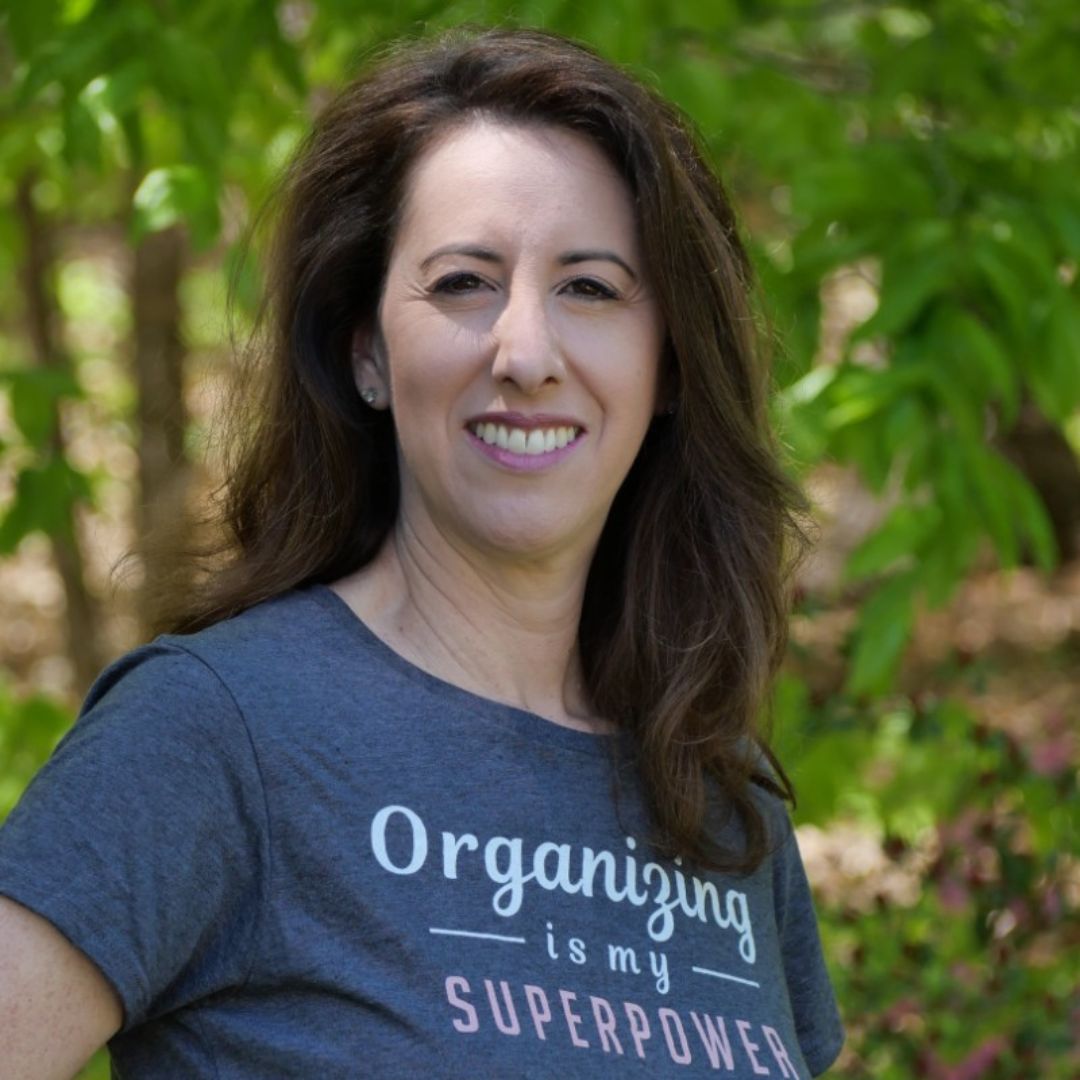
For Professional Organizer Lauren Saltman of Living.Simplified., decluttering and organizing is how she lives her daily life, whether she is organizing her home, a friend’s office, or a client’s garage, her resourceful approach yields happy clients who learn to incorporate techniques for a happier and more simplified lifestyle.
7. Store lids separately
Storing casserole dishes with the lids on is fine, but it certainly isn’t the most space-savvy solution – storing them separately makes more sense, whether you’re organizing a small kitchen or not. Under-shelf baskets (try this wire design at Amazon) are great for this; stack a nest of dishes on a cabinet shelf then position their corresponding lids in the basket above.
If you’re looking for small kitchen storage ideas, fitting a rack or narrow shelving to the back of a cabinet door is a great way to maximize space; slot the lids inside and store the dishes separately in the cabinet itself. This works brilliantly for storing pot lids, too.
8. Stack by shape and size
Having a varied selection of shapes and sizes for your baking/casserole dishes can be great for cooking, but not so great for storing. Ideally, you’d buy dishes from the same brand so they nest nicely together, but if you’re dealing with an eclectic collection, a well-thought out stacking method is a good solution.
‘Start by grouping dishes by shape and size. Keep all your circular and square dishes separately and stack them in size order, so the smaller ones can fit inside the bigger ones. This will help save you space and make it easier to find the exact dish you need when cooking’, says professional organizer Laura Price, founder of The Home Organization.
Slotting a paper towel between each dish should prevent any chipping or scratches, something you’ll want to consider particularly when stacking those made from glass.
‘Be sure to avoid over-stacking; trying to grab a casserole dish from lower in the stack without removing the ones on top will result in a dish avalanche! Try to keep it to a maximum of three or four casserole/baking dishes in a stack and make sure they’re not precariously balanced’, adds Laura.

Laura Price is the owner of The Home Organisation. Laura Price's goal is to help others experience the benefits of living an organized life after discovering that organized homes brought her peace when raising three children in a hectic home. Hence the birth of The Home Organization, a dedicated team of professional organizers.
FAQs
What is the best way to store baking pans?
Given they’re flat and slim, you’d think baking pans would be easy to store. Stack them on top of each other in a cabinet, job done, right? Unfortunately not. You likely have a variety of different sizes, some designed to hold muffins, others cupcakes… getting them to nest neatly on top of each other is almost impossible. And even if you do manage a precarious pile, take one from the bottom and the whole lot comes crashing down.
In our (and the experts') opinion, the best way to store baking pans is vertically, either in a deep drawer or in a kitchen cabinet – they’re far more accessible, and you don’t risk a pan avalanche every time you pull one out. As they’re so lightweight, you don’t need to invest in fancy inserts; there are plenty of organizers specifically made for baking bans, but a simple plate rack gets the job done just as well. Choose an adjustable design so you can accommodate all sizes.
It isn’t groundbreaking, but another alternative way is to stash pans in a big basket. They’re not fragile so there’s no risk of breakages, and having them loose like this makes them really easy to rifle through. You don’t have to worry about aesthetics either, which is a bonus. There’s nothing worse than seeing a jumbled stack of pans every time you open the cabinet door!
However you choose to do it, storing baking dishes so you can see and access them easily will make all the difference to your kitchen organization. Less time spent rifling around for a casserole dish means more time to get your cooking spot on – bonus!

For 10 years, Tara King worked as a Content Editor in the magazine industry, before leaving to become freelance, covering interior design, wellbeing, craft and homemaking. As well as writing for Ideal Home, Style at Home, Country Homes & Interiors, Tara’s keen eye for styling combined with a passion for creating a happy – and functional – family home has led to a series of organization and cleaning features for H&G.

